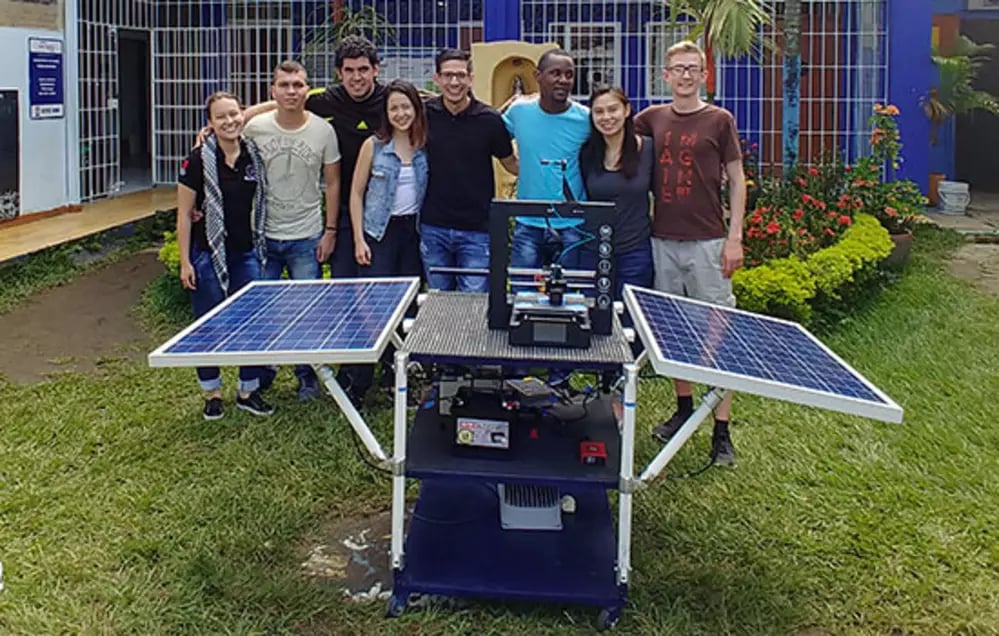To help provide access to 3D printing in impoverished areas of Cali, Colombia, engineering students from Rochester Institute of Technology (RIT) have developed a solar power system that allows 3D printers to operate in areas where electricity is unstable.
From makeshift medical devices to tools that sustain survival, 3D printing offers immeasurable potential for those living in remote or impoverished communities. Unfortunately, access to additive manufacturing technology is usually limited in these parts of the world.
But students from Rochester Institute of Technology (RIT) believed that if they could provide the latest manufacturing technologies to an underserved community in Cali, Colombia, they would able to entice young people into learning a skill and steer them away from gang violence.
For their senior multidisciplinary design course, the six electrical, industrial and mechanical engineering students decided that they should focus on teaching 3D printing skills. In Cali, electricity isn’t always stable or available to local residents, so the team developed a reliable power supply solution to solve this critical problem.
The aim of their project is to create a power supply system that will allow a 3D printer to work reliably in an environment where electricity is unstable or unavailable, like in certain areas of Cali.


Building Solar Panels to Power 3D Printers
The 3D printer solar power system that the group developed can seamlessly switch between solar power and battery power. Therefore, when the mains are unable to supply power to the 3D printer, the large mounted solar panels or battery can handle the load.
“The system the students developed here at RIT is a system that would automatically sense when solar power is available [or] grid power is available and depending on which of those two sources are available would charge a battery,” said Marcos Esterman, associate professor in RIT’s Kate Gleason College of Engineering.
The RIT engineering students have already started working remotely with local Colombian students from Universidad Autónoma de Occidente de Cali. While the university students worked on the power supply, Colombian students have been developing a method to use recycled plastic bottles to create 3D printing filament.
“Having those backup power sources like the solar panels or the battery, or also being able to plug into the grid, are all things that will keep this printer up and running in the community,” said Josh Cohen, a fifth-year student who worked on the project.
At the moment, the 3D printer is only capable of creating plastic designs, but it’s certainly a great way for encouraging young people to get involved and start designing their own ideas to help improve their communities.
Source: Engineering.com
License: The text of "Students Develop 3D Printer Power System for Impoverished Colombian Communities" by All3DP is licensed under a Creative Commons Attribution 4.0 International License.